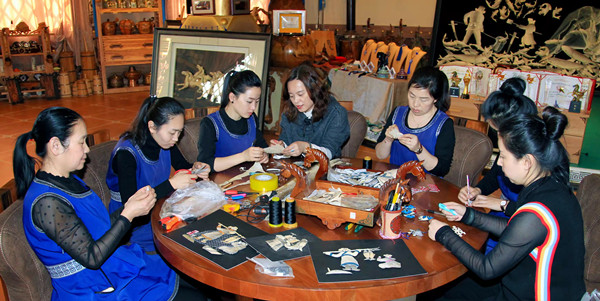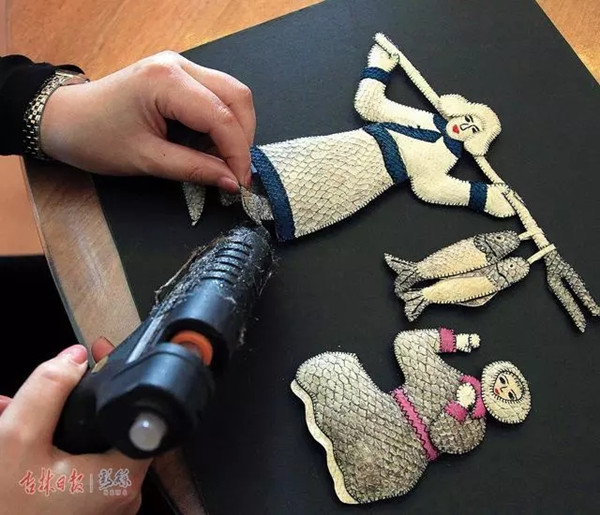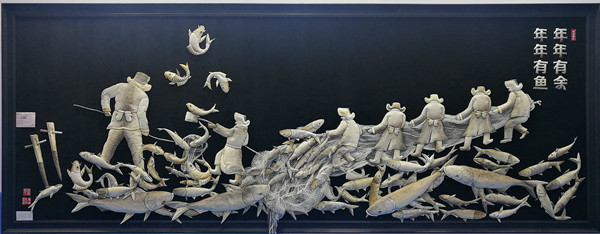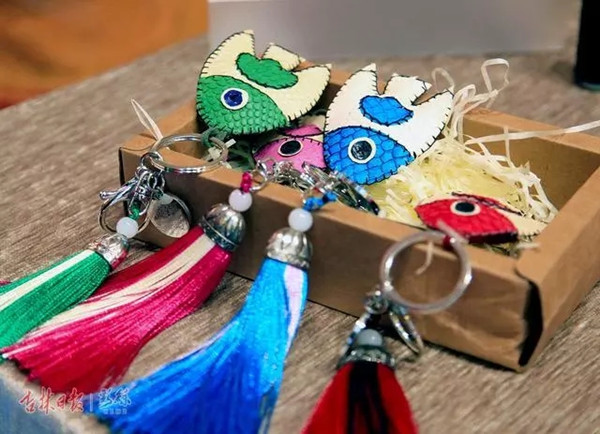Chagan Lake fish skin art

Xu Cui (middle), a practitioner of Chagan Lake fish skin art, and her team make fish skin paintings. [Photo/Jilin Daily]
Chagan Lake in Northeast China's Jilin province is famous for its traditional fishing and hunting culture. This unique culture has given rise to an exceptional form of intangible cultural heritage known as fish skin art.
Chinese craftsmen have been passing down this folk art for thousands of years.
After the subject is settled and the draft is drawn up, craftsmen dye the sheets of fish skin into different colors, or simply separate them by their natural hues (usually white, yellow, gray and black) before cutting them to the required size and shape before splicing and sewing them together to form the image.

Xu Cui makes a piece of fish skin art. [Photo/Jilin Daily]
Bighead carp skin, carp skin, and grass carp skin are the most common raw materials. Combined with modern technology and three technological processes, the fish skin can be tanned into leather and refined by craftsmen.
The finished products of Chagan Lake fish skin include fish skin paintings, pendants, ornaments, and household items.
The craftsmanship of Chagan Lake fish skin was included in the fourth group of representative projects of intangible cultural heritage in Jilin province on May 26, 2019.

A fish skin painting is made. [Photo/Jilin Daily]

A piece of Chagan Lake fish skin art [Photo/jlsy.gov.cn]

Ornaments made of fish skin [Photo/Jilin Daily]
